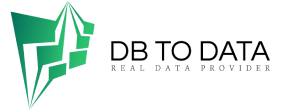Are you looking to improve your website’s SEO performance and increase your online visibility? One crucial aspect to consider is optimizing your heading tags. Heading tags are essential for both search engines and users to understand the structure and content of your web pages. In this article, we will explore the best practices on how to optimize your heading tags to boost your website’s search engine rankings and attract more organic traffic.
What are Heading Tags?
Heading tags, also known as H tags, are HTML elements that denote the headings and subheadings on a web page. They range from H1 to H6, with H1 being the main heading of the page and H6 being the least significant. Using heading tags properly helps search engines understand the context and hierarchy of your content, making it easier for them to index and rank your pages accurately.
The Importance of Optimizing Heading Tags
Optimizing your heading tags is crucial for several reasons. Firstly, it helps improve the overall user experience by making your content more organized and easier to read. Secondly, it provides search engines with valuable information about the main topics of your page, increasing the chances of ranking higher in relevant search results. Properly optimized heading tags can also enhance the accessibility of your website for users with disabilities who rely on screen readers to navigate the web.
How to Optimize Your Heading Tags
Use Relevant Keywords: Incorporate your target keywords naturally into your heading tags to signal to search engines what your page is about. However, avoid keyword stuffing, as this can harm your SEO efforts.
Follow a Hierarchical Structure: Use heading tags in a logical order, starting with H1 for the main heading, followed by H2 for subheadings, and so on. This helps both users and search engines understand the content hierarchy.
Make Them Descriptive:
Ensure your heading tags accurately describe the buy telemarketing lead that follows. Clear and descriptive headings not only attract readers but also help search engines better comprehend your content.
Keep Them Concise: Aim for brief and concise heading tags that convey the main idea of each section. Long headings can be overwhelming for users and dilute the impact of your key messages.
Use CSS Styling:
Customize the appearance of your heading tags using CSS to align with your website’s design and branding. Consistent styling across your headings creates a cohesive and professional look.
Optimize for Featured Snippets: Craft headings that answer influencer marketing, how to create a perfect strategy user queries concisely and clearly. By structuring your content in a question-and-answer format, you increase the chances of appearing in Google’s featured snippets.
Test and Refine
Regularly evaluate the performance of your heading tags through betting email list tools and A/B testing. Adjust your headings based on user engagement metrics and SEO insights to continuously improve your optimization efforts.
Conclusion
In conclusion, optimizing your heading tags is a fundamental aspect of SEO that can significantly impact your website’s visibility and rankings. By following the best practices outlined in this article, you can enhance the structure and relevance of your content, leading to improved user experience and higher search engine rankings. Remember to regularly review and update your heading tags to stay current with SEO trends and algorithm changes, ensuring that your website remains competitive in the digital landscape.
SEO Meta-description: Learn how to optimize your heading tags effectively for improved SEO performance and higher search engine rankings. Increase your website’s visibility with expert tips and best practices.



